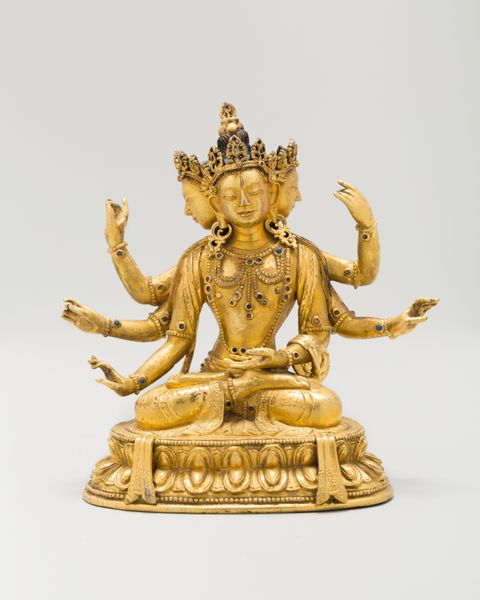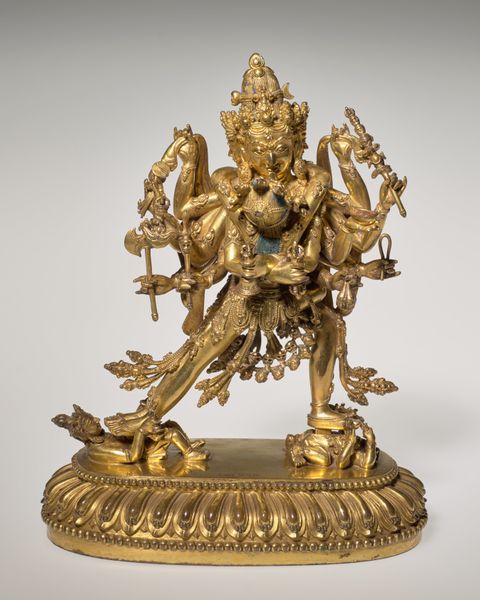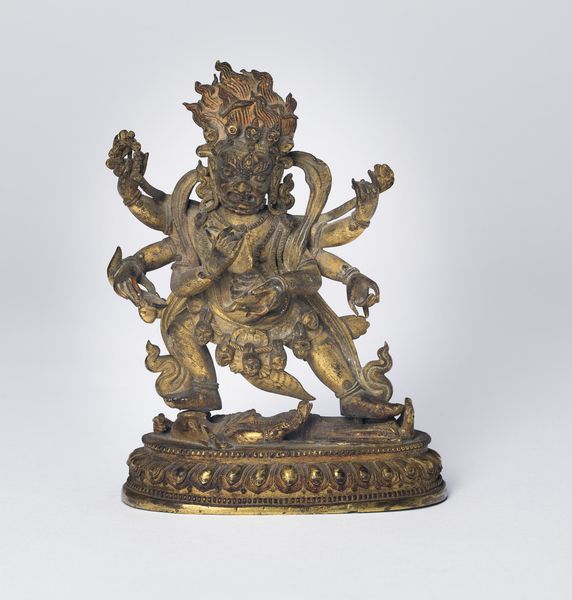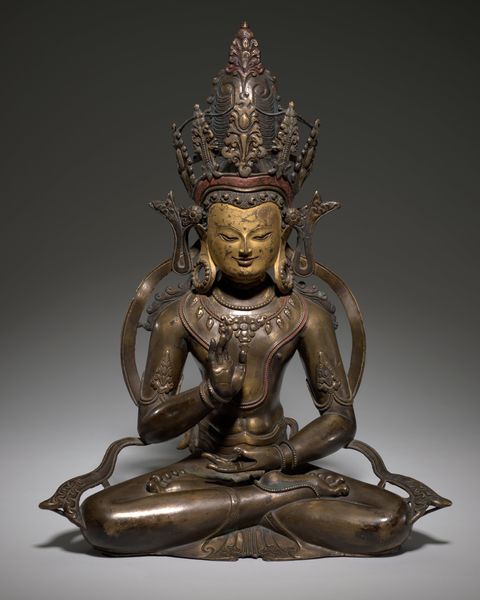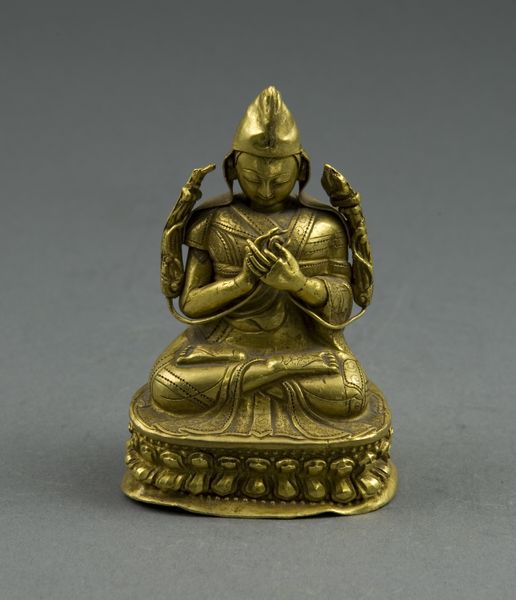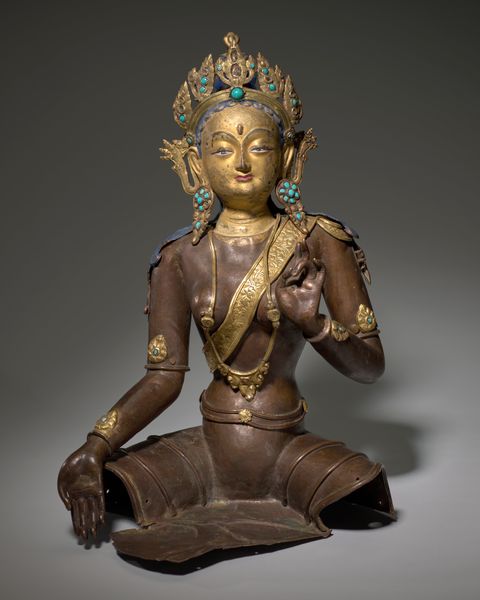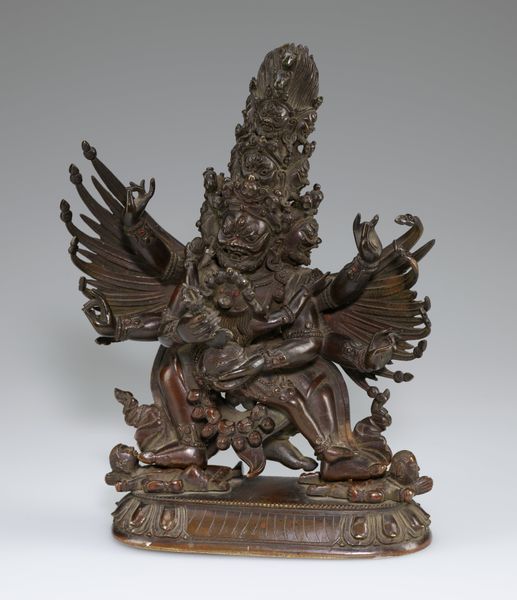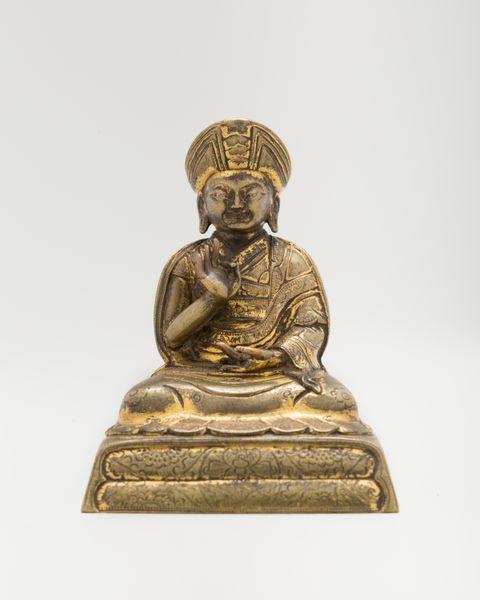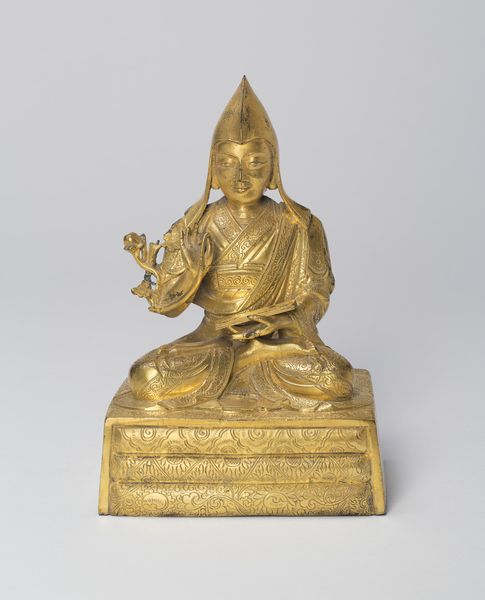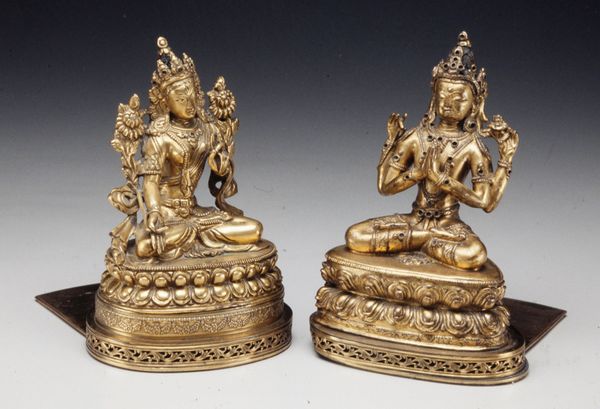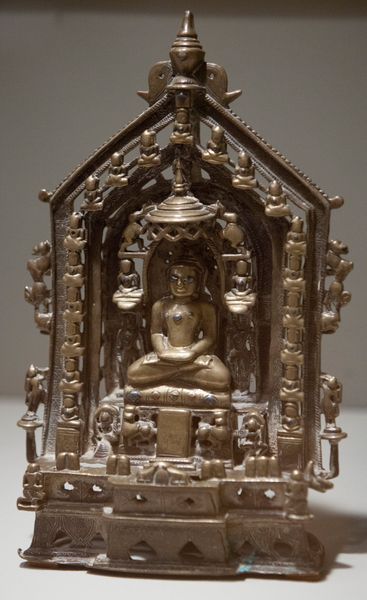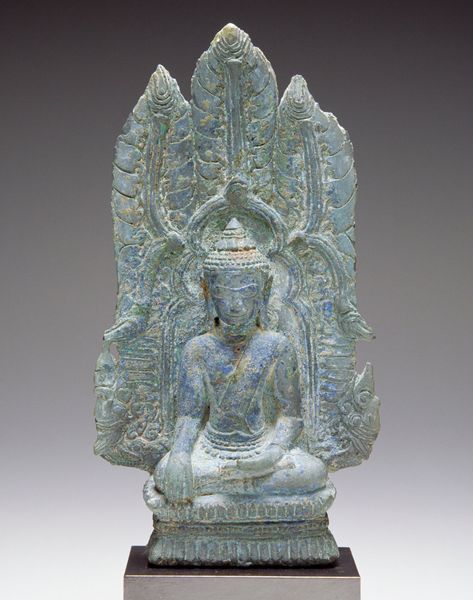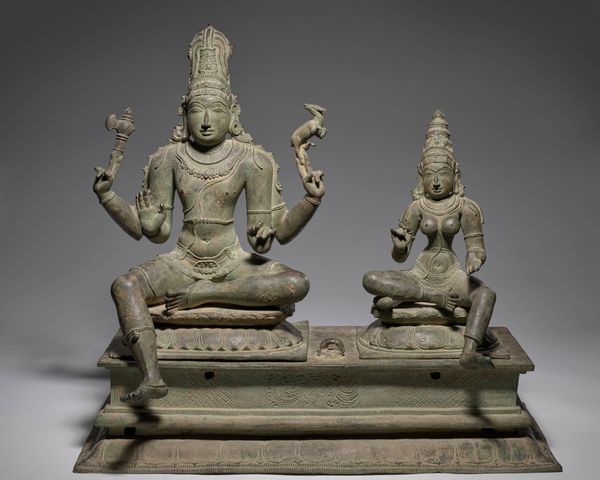
Green Tara, Seated in Pose of Royal Ease (Lalitasana), with Lotus Stalks on Right Shoulder and Hands in Gestures of Reasoning (Vitarkamudra) and Gift Conferring (Varadamudra) Possibly 1368 - 1644
0:00
0:00
bronze, sculpture
#
sculpture
#
asian-art
#
bronze
#
figuration
#
sculpture
Dimensions: 21.5 × 13.5 × 12.5 cm (8 1/2 × 5 1/4 × 4 7/8 in.)
Copyright: Public Domain
Editor: Here we have a sculpture from the Sino-Tibetan culture, likely created between 1368 and 1644. It's a bronze figure titled "Green Tara, Seated in Pose of Royal Ease..." and she's absolutely mesmerizing! The bronze has a beautiful golden hue. What stands out to you the most about this work? Curator: Immediately, the labor involved in crafting this bronze figure comes to mind. Consider the extraction of the ore, its smelting, the molding and chasing – all processes demanding skilled labor, embedded within a complex social hierarchy that enabled its production. Think of the unseen hands, perhaps anonymous artisans, who contributed to the finished product. What was their compensation? Editor: That’s fascinating. I hadn’t considered the people behind the creation, just the finished piece. Did the choice of bronze itself hold significance beyond its aesthetic appeal? Curator: Absolutely. Bronze wasn’t simply a neutral material. Its value made the sculpture a significant symbol of wealth and power. Furthermore, trade networks connecting the source of the materials with the patrons who commissioned it were strengthened through its production and dissemination. Editor: So, it represents a network of resources, labour, and power. It almost shifts how I view the image entirely; from religious icon to socio-economic document of the era. Curator: Precisely. The ‘Green Tara’ embodies religious significance while simultaneously revealing the underlying structures of labor and consumption during the Sino-Tibetan period. The very act of admiring the finished form needs to incorporate an awareness of the lives and circumstances that brought the art into existence. Editor: That provides a deeper perspective beyond just the image itself. It seems much more than aesthetic craftsmanship alone. Curator: Indeed, viewing it through a materialist lens allows a broader understanding of this remarkable creation, revealing not only skill, artistry and faith but also, the circumstances of the communities around its production.
Comments
No comments
Be the first to comment and join the conversation on the ultimate creative platform.
